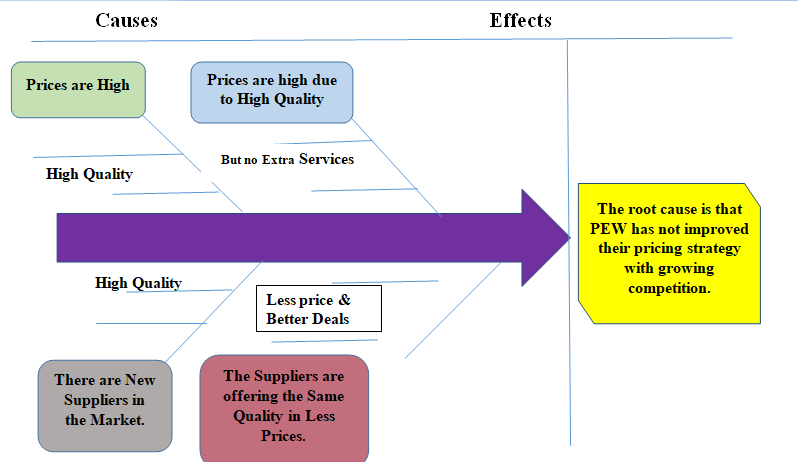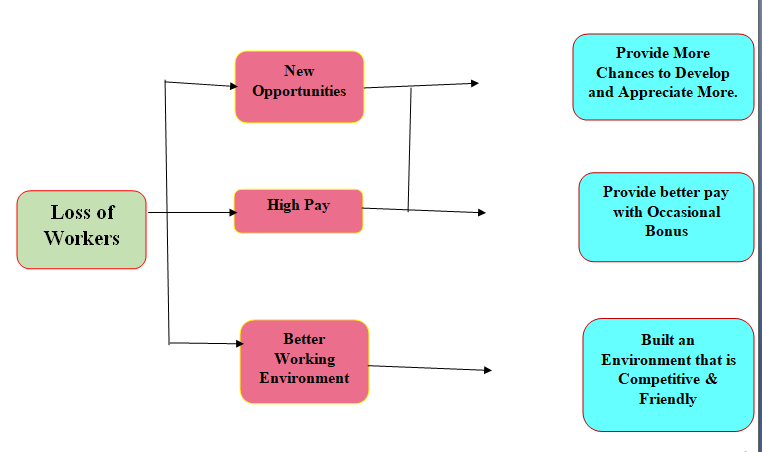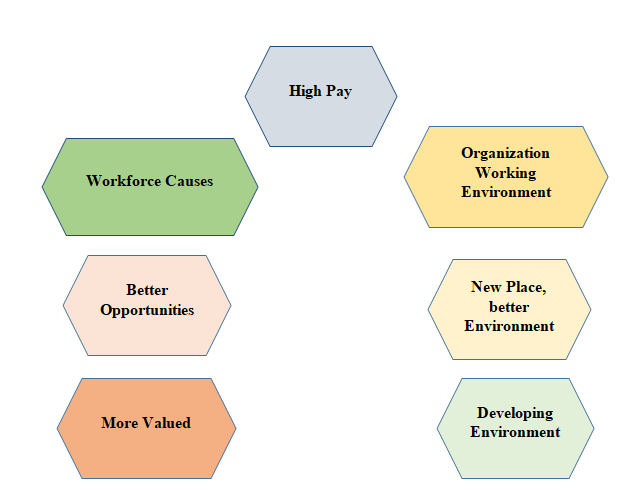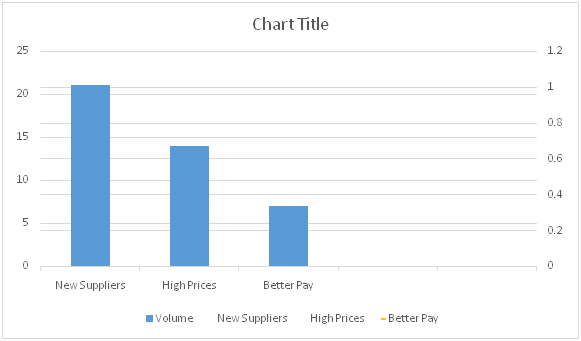Case Study: Continuous Improvement Plan For Precision Engineering Works
Question
Task: This assessment item requires you to work in a GROUP (no more than 3 students)
1. As a business improvement consultant, you and your team (including members from PEW) have only three (3) months to correct the situation. You would need to:
i. Identify the root cause(s) that lead to the problems using appropriate tools and techniques.
ii. Develop a continuous improvement plan to ensure the problems and issues are not repeated.
iii. Elaborate on the competencies required from PEW management and employees to effectively bring about the change.
2. You must show evidence of using at least seven (7) tools and techniques that you have learnt from this unit to address question (i) above.
3. You may refer to the Project Quality Management from PMBOK, PRINCE2 or any other quality management systems such as ISO9000 series, TQM (Total Quality Management), Six Sigma / Lean Six Sigma etc to devise your continuous improvement plan.
4. Your submission should be made using Microsoft Office documents and submitted as a separate 2,500 - 3,000 word Microsoft WORD document. Text beyond the 3000 word limit WILL NOT BE MARKED. Text length less than 2500 words will be penalised by 5% of the total available marks.
5. Supporting diagrams / figures may be presented in other formats - Excel, PowerPoint slides, PDF documents, as part of the appendix and will not count towards the word limit. The reference list will also not be included in the word count.
6. Tables shall be included in the word count.
7. Your submission should be a properly constructed to an academic standard. It should contain an effective introduction, body and conclusion. The body should present the justification to support your recommendations, provide your assumptions and finally, provide a conclusion that should restate your recommendations on a high level.
8. The submission should contain a coherent, but necessarily restricted review of the academic literature on the project management topics in question. The literature review should be integrated into the, not a separate section. Do not include an executive summary or an abstract.
9. This assessment item involves researching your assigned topic to enhance your understanding of lean project management concepts and utilisation of academic literature. Whilst you use the recommended textbooks and lecture materials, you may also refer to relevant peer reviewed, academic journal articles. A reference list (comprising between 5 – 10 references) formatted in the prescribed APA style is compulsory.
Answer
1. Introduction
A continuous improvement plan is also known as a continual improvement process which is utilized in an organization to improve the quality of the products and services by implementing the plan in the business operations. A continuous improvement process is a never-ending process which will identify problems, reduce the problem and then will finally eliminate it. There are a number of tools and techniques discussed in this continuous improvement that are especially utilized in the detection of the problem and also to find an appropriate solution to it. Precision Engineering Private Limited is a part of a lucrative industry where with the changing times there is an emergence of small organizations and many other competitors.These new emerging organization are eating the profits of PEW and also stealing their loyal customers and expert workforce, which is affecting the organization immensely. This situation has to be tackled effectively for improving the present and the future of the organization.
2. Continuous Improvement Plan for Precision Engineering Works
The Precision Engineering Works Private Limited is in an urgent need for a continuous improvement plan, to get their dominance back in the market and to beat the growing competition. But to initiate the continuous improvement plan, there is a need to identify the root cause of problems which are arising in the organization (Chan, 2017).
2.1 Identification of the Root Cause of the Problems
There are three main problems which have been identified in the organization PEW. The root cause of all these problems will be identified through various tools and techniques. The tools and techniques selected mustbe appropriately chosen for analyzing the problem so as to find the most effective and efficient approach to identify the core issue.
Brainstorming& Flowcharting
The first problem which has been identified is the growing competition. For the purpose to recognize the root cause of this problem a brainstorming session is required, which is furthermore analyzed with a flowchart. This session will be conducted by organizing a meeting with the main group, informing the group in advance about the problem of discussion, with a particular person assigned to jot down the opinions of each person in the group, providing each group member the opportunity to put forward their opinion clearly. The brainstorming session for dealing with the problem of growing competition is being discussed between three group members-
A: He has the responsibility of conducting a research on new suppliers in the market. The competition has reduced the profits of the organization which has affected the organization massively.
B:He has been appointed with the role of researching the issues that are responsible for shifting the loyal customers of the organization. It is also due to the reason that the competitors have a better marketing strategy and are providing better deals to the customers.
Me: I have been appointed with the role of analyzing the overall problems in the organization. The growing competition has not been tackled effectively that is resulting in loss of customers.
Flowcharting
Flowcharts help in organizing and analyzing the problem and the various issues surrounding it in a systematic manner. A simple flowchart provides clarity of thoughts to the team members (Coy & Adams, 2012). We have provided a simple flow chart below in this continuous improvement.
With this brainstorming session and the further utilization of the flowchart technique, the main root cause of the problem in the organization PEW is that it is unable to provide their customers with appropriate deals to retain them in the organization or to attract the new ones.
Fishbone Diagrams& The “5 WHYS”
Considered to be the most efficient root cause analysis technique along with the “5 Whys”. The Fishbone diagrams are also popularly known as the cause and effect technique. The Fishbone diagrams, uses arrows that indicate the flowing of a cause or various causes towards nonconformity (Flott, 2011). The Fishbone diagram is a process which casually investigates a problem by asking various questions, for example “What really happened” This investigation continues till the time a root cause is not identified. The questions which are asked in this technique focuses on “What”, “When”, “Why”, “Where” and “How”. The common factor between the “5 Whys” technique and the Fishbone diagram is that both of them are the analysis ways which have a cause and effect relationship and approach. The “5 Whys” approach keeps asking the “why” of a problem until a valid conclusion is derived. There are mostly five questions, but if the derived reason is still not appropriate, then additional questions are further asked.
In the organization PEW, the other problem which has been identified is the prices of the products which are causing the loss of customers. The “5 Whys”-
Why are the prices affecting the customers
Because the prices are high.
Why the prices are high
The prices are high because of the high quality.
Why are the prices and quality both affecting the customers
The prices which are being offered for the quality are appropriate, but there are new suppliers in the market.
Why the PEW organization is getting affected by the new suppliers
The organization is getting affected because the loyal customers are shifting to the new suppliers and the organization is unsuccessful in attracting the new ones too.
Why the loyal customers are shifting to the new suppliers
The new suppliers are offering the same quality product at a lesser price which is the main reason that is influencing the shift of the loyal customers and also the reason behind the new customers choosing other suppliers too.
So, from the “5 Whys” technique the root cause which has been identified is that the prices of PEW are high, in comparison to the other organization who are providing the same quality products. The Fishbone diagram-

Tree Analysis & Affinity Diagrams
The third problem that has been identified in the PEW organization is the loss of workers. This problem’s root cause will be identified through the tree analysis and the affinity diagrams. The process of a tree analysis is finding various root causes and then align them with the possible corrective actions (Guerra-López& Hutchinson, 2013). Also, the analysis breaks down the problems into broad categories and further into finer details. The tree analysis-

The Affinity Diagram also works with the objective of cause and effect. The results of the brainstorming session are further analyzed by the affinity diagrams. The affinity diagrams help in generating, organizing and consolidating the information in a better manner. After the generating process of ideas, the ideas are categorized according to the similarities between them, thus helping in opening many possibilities for a problem to be solved.

Pareto Analysis
The Pareto analysis technique is based on a principle of 80/20. This analysis works for both cases, that is, positive and negative results. This analysis will inform the PEW about the 80 percent buyers of their product. This analysis will also provide shocking details like many a time this is found that 20 percent of the buyers do 80 percent of the sales. In the same way, this analysis will also inform that 80 percent of the problems are mainly due to 20 percent root causes (Immel, 2013). The Pareto analysis also helps in prioritizing important activities and also the correct allocation of resources. The Pareto analysis is conducted after getting the problems analyzed through different tools.
|
Problems |
Root Cause |
Score |
|
Competition |
New Suppliers High Prices |
8 |
|
Price |
High Prices New Suppliers |
6 |
|
Loss of Workers |
New Suppliers Better Pay |
7 |
The Pareto Chart according to this analysis is-

2.2 Assumptions
The following assumption has been made for the problems which have been identified in the organization PEW. They are-
The PEW has not taken their competitors seriously and they have not made any proper strategies to deal with them.
The high prices are due to better quality. But if the same product is available in the market in lesser price, then the PEW has not conducted market research and also have not altered their pricing strategy.
The PEW has shown no appreciation for their workforce, which has led to the loss of workers.
The Experienced workers are getting better pay and better opportunities for development at new places which was missing at PEW.
Suffering the loss on their profits up to 45%, shows an attitude of ignorance and disregard towards the organization.
3. Continuous Improvement Plan
The continuous improvement plan for PEW will be formulated with the help of the six sigma methodology DMAIC. The DMAIC is a systematic approach that will help in dealing with the different aspects of the problems identified in a better manner for the next three months.
3.1 D-Define, M-Measure & A-Analyze (Problem Identified)
The main problems which have been identified in the organization PEW are a loss of profits, growing competition, prices of the products and the loss of experienced workers (Kakyo& Xiao, 2017). With the growing competition in the market, there are a number of new suppliers who have adapted to better technology and approached that have helped them to produce a good quality product in lesser price. The PEW is providing the customers with good quality but the prices that the organization is charging way too high in comparison to the other organization. There are problems with the organization’s working environment that have led to the loss of experienced workers. All these problems have led to the loss of profits by the organization. The magnitude of these problems is very high as these problems have led to the huge losses to the organization, approximately 45% of the profits have been eroded.
3.2 I-Improve (Action Taken & Resources Required)
Action Taken
The actions which have to be implemented for solving the problems can be divided into two categories. They are-
Long-Term Solution
A regular competitor analysis has to be conducted to form better strategies for dealing with them, it should be conducted at every six months.
An encouraging and supportive environment should be created in the organizational with regular employee self-assessment.
Also, better communication should be built between the employees and the management.
The employees pay should be set up according to their capabilities and also what the competitors are offering them.
The organization requires better marketing strategies (Karen Singh, 2018).
Short-Term Solutions
The company needs to attract new customers and also get back the lost ones. For this the organization should provide them special discounts initially to get back the attention of the customers.
The company should also reduce their prices, making them a bit less than their competitors for a short while to steal the customers of their competitors.
Resources Required
The resources required by the organization are-
An effective and strong employee management plan.
An effective and aggressive marketing strategy. Also the budget of marketing should be increased to create a strong image in the market (Mühlbacher&Wekerle, 2010).
New and better technology to reduce the manufacturing cost of the products, as to earn more profits.
Different variety of products. Introduce new and unique products, to get the attention of the customers and to stay ahead of the competitors.
Get back the lost workforce. Also, employ new and better-skilled workforce, which will always stay loyal to the organization.
3.3 C-Control (Follow up Actions & Status)
There is a need for evaluating the implemented plan, understanding the impact, effectiveness and the sustainability of the applied actions. For the organization PEW the following steps have to be taken to-
Get to know the problems of the employee. Also, through the regular employee assessment, encourage the employees to do better work.
Conduct more group discussion with the management team and see that all the employees are getting equal opportunities to display their opinions. Also, examine the relationships between the team members.
Examine the progress which the organization has achieved through the short and long-term solution. Make changes if needed.
Examine the application of the pricing strategy and make modification according to the circumstances.
Evaluate the changes in the brand image of the organization in the market (Sloan & Sloan, 2011).
4. Competencies
4.1 Business & Strategic Management
The main competencies required for business and strategic management are-
Communication
It is important to build better communication with the team. It is also important to build better communication as this is the key of transporting your vision and mission for the organization to the teammates.
Organization
There is a massive need for better organizing skills at PEW. The organizing skills help in bringing clarity and provide direction which are free from any confusion. Also, this helps in prioritizing the activities.
Patience
For an effective manager and an employee, it is important to have patience while conducting any task. Patience helps in achieving better and higher goals.
Motivation
Be it the team manager or any employee, they should always be motivated. Also, self-motivation is an essential key as it acts as a driving force to fulfill the objectives of an organization.
4.2 Technical Management
The technical competencies which are required are-
Project Management
All the employees, who are involved or not, directly with the different roles of project management should have the basic information regarding the planning, processing and executing a plan for a long-term project.
Data Management
Being a good manager, required the skills to effectively collect information and analyze it and then further utilize it in the working of the continued operations in the organization.
Technology
For any employee, it is important to have knowledge and understanding of the new technologies which are cost effective and helps in getting better and quicker results.
4.3 Leadership
For being a good leader there are a number of qualities which are required-
Interpersonal Skills
Interpersonal skills are important for every leader. This quality is part of the social intelligence which is also very important for good leadership. The interpersonal skills help in building strong relationships which are important in any organization.
Prudence
Popularly known as the Aristotle’s cardinal virtues, prudence is very important for leadership. Prudence also means wisdom, which is the key to understand the various aspects, perspective and opinions. Every leader should understand the other person’s side to make better judgments (Zastrow, 2015).
Conflict Management
For a leader, having the abilities to resolve conflicts between employees in an organization is very important. The conflict between employees should be handled with an open approach and without taking sides. Also, being a leader a person should have the ability to resolve his personal conflicts with different situations and traits.
Decision Making
Decision making is a process which holds the future to any project, action and plan. For a good leader it is important to know the attributes of making a good decision. A leader should know when to take a solo decision, when to involve the group and when to sit back and let others take the charge.
5. Conclusion
The problems which have been identified in the PEW organization by this continuous improvement can be handled and controlled with the strict approach of the continuous improvement plan. The continuous improvement plan is a never-ending approach and it should always be improved and updated with the changing circumstances in the organization. The various competencies which are needed for the employees and the managers of the PEW can only be achieved by working on each individual by the means of many activities which help in learning new tricks and enhancing the already existing qualities. It is been inferred in this continuous improvement plan assignment that for the PEW, managing the employees and the competitors is the only key that will help the organization in the long run.
References
Chan, C. (2017). Effective root cause analysis: problem nature and tools integrative approach. International Journal Of Value Chain Management, 8(2), 93.
Coy, S., & Adams, J. (2012). Walking the Talk: Continuous Improvement of a Quality Management Field Exercise. Decision Sciences Journal Of Innovative Education, 10(2), 223-244.
Flott, L. (2011). Root Cause Analysis. Metal Finishing, 109(6), 40-41.
Guerra-López, I., & Hutchinson, A. (2013). Measurable and Continuous Performance Improvement: The Development of a Performance Measurement, Management, and Improvement System. Performance Improvement Quarterly, 26(2), 159-173.
Immel, J. (2013). Root Cause Analysis for Young Engineers. Science, 340(6131), 444-445.
Kakyo, T., & Xiao, L. (2017). Nurse managers’ experiences in continuous quality improvement in resource-poor healthcare settings. Nursing & Health Sciences, 19(2), 244-249.
Karen Singh. (2018). Lifting the lid on root cause analysis: A document analysis. Safety Science, 107(1), 109-118.
Mühlbacher, F., &Wekerle, T. (2010). Continuous improvement. Transplant International, 24(1), 1-1.
Sloan, K., & Sloan, T. (2011). Dispersion of continuous improvement and its impact on continuous improvement. International Journal Of Technology Management, 55(1/2), 43.
Zastrow, R. (2015). Root Cause Analysis in Infusion Nursing. Journal Of Infusion Nursing, 38(3), 225-231.












